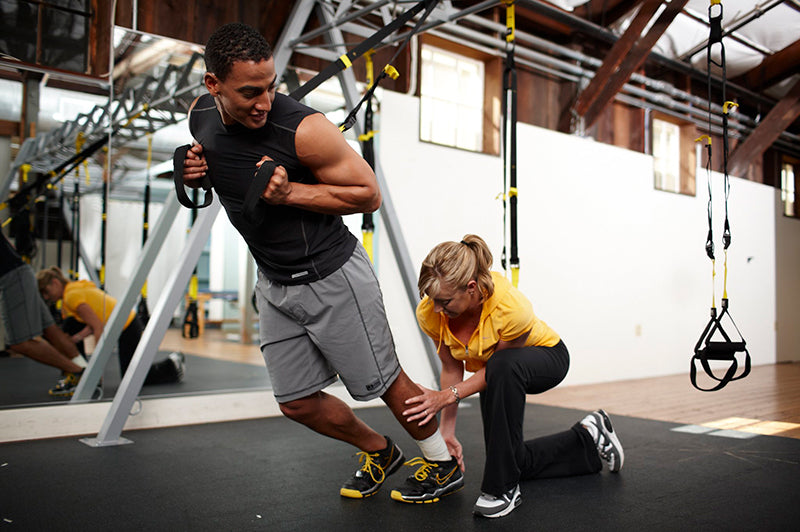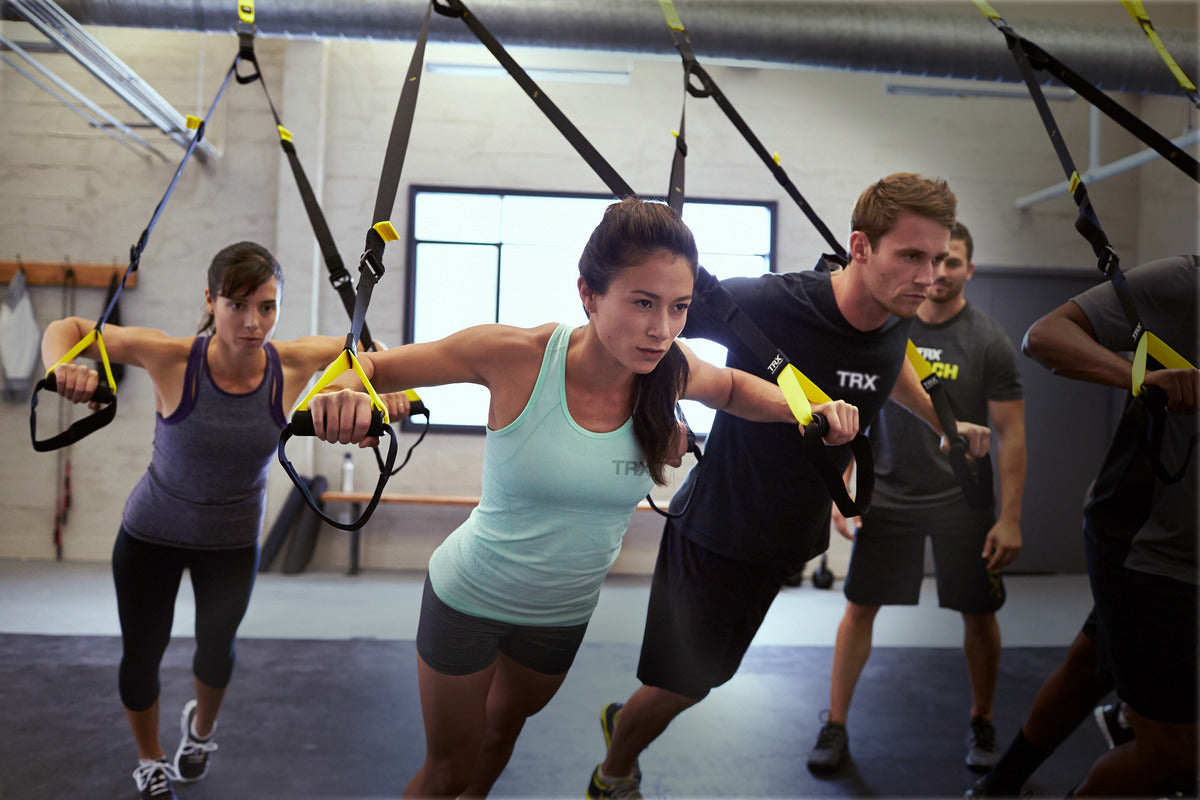Movement acts as a therapeutic balm for the body. Whether you're undergoing injury rehabilitation or engaging in strength training to prevent injuries, motion plays a crucial role in the healing process. Both your body and brain rely on movement to foster development, growth, and recovery. Consequently, movement becomes even more essential following an injury.
In this article, we will delve into the utilization of strength training as a means to prevent injuries and effectively rehabilitate existing ones. Before diving in, take our quick assessment quiz to get personalized exercise recommendations based on your injury history and fitness goals. By understanding the principles and practices involved, you can enhance your overall well-being and reduce the likelihood of future injuries.
TAKE OUR TRAINING QUIZ
3 Benefits of Strength Training
Many people choose strength training to build a muscular physique. But you’ll receive far more benefits than that.
1. Neuromuscular Coordination and Symmetry
The ultimate benefit of strength training is building neuromuscular coordination and symmetry. It’s what allows you to push forward into whatever fitness goal you're trying to achieve while limiting your risk of injury or re-injury. In reality, a muscular physique is the outcome of neuromuscular coordination and symmetry.
2. Less Pain
I often hear people mention that they don’t want to do strength training because it could cause pain in certain joints. Strength training should be the exact opposite — a weak body often correlates to a much higher risk of pain and acute or chronic injury.
3. Injury Prevention
Whether your injury was acute or blunt, strength training can be impactful to your healing. Your body and brain will need to rehab and relearn specific movement patterns. Having a rehab strength training program becomes more important than ever after a significant injury.
Why Is Proper Injury Rehab Important?
Following an injury, whether accompanied by pain or not, our movement patterns tend to undergo alterations. It's important to acknowledge that the body possesses innate wisdom. With a desire to prevent reinjury and minimize discomfort, we instinctively modify our movements to avoid actions that trigger pain.
This aversion to pain serves as a protective mechanism orchestrated by your body. Your brain stores the memory of past injuries, resulting in potential limitations in joint mobility. Additionally, the muscles surrounding the injury are prone to tightening, which can impede function and overall strength.
Neglecting proper rehabilitation of your injury can exacerbate these issues, leading to further complications, reaggravation of the initial damage, or persistent underlying pain and dysfunction. Prioritizing effective injury rehabilitation is crucial in maintaining motivation and facilitating a successful return to physical activity.
What Causes Strength Training Injuries?
If you’re rehabbing an injury, as frustrating as it may be, there was likely already a series of issues before the injury occurred. Perhaps it was repetitive misuse, not warming up and improperly preparing a joint for a particular range of motion, or overloading your muscles with too much weight too quickly. Whatever it was, it’s helpful to keep in mind that you’ll become more powerful when you take care of the underlying issues that initially existed.
To be clear, you can do strength training and still have an injury. At whatever point you start strength training, movement matters. It’s vital to fully rehab any past injuries, continue to work on your movement quality, and listen to your body.
If you’re new to strength training, not only are you working on helping your muscles become stronger, you’re strengthening other tissues like tendons and ligaments. It’s essential to build up slowly. Pushing weights too fast or doing too much volume before your body is ready can cause various issues that limit your movement or strength and increase your overall risk of injury.
6 Strength Training Tips for Injury Prevention and Rehab
If you’re strength training to avoid an injury, you’re in a great place to set yourself up for success. Starting your strength training journey with a balanced, well-functioning body will set you up for better physical fitness performance, whether you’re a competitive athlete or want to be fit and toned.
1. Focus on Quality
Your body doesn’t care how many reps you do or how much weight you lift. It only knows the stimulus. The body learns strength. Your muscles, nervous system, and brain will adapt to the environment you put them in.
You need to ensure that you’re moving well and with intention. Pay attention to your form and range of motion. Your body will respond positively when you focus on quality first.
2. Build Up Slowly
It’s not recommended or advised to start your strength training at a 10 on the intensity scale, and I recommend starting at 6 or 7. If you’re new to strength training, you must master proper form before increasing the weight, reps, or intensity of your workout.
For strength training beginners, slow reps with light free weights can help to prevent injury. But even if you’re an advanced athlete, slowing down your reps allows your muscles to experience more time under tension, which can increase your muscle size faster.
3. Listen to Your Body
Constantly scan your body when you’re lifting to evaluate your form and your skill progression.
Do you feel the right muscles working for the exercise you’re performing? Do you feel muscle pain or joint discomfort during your movement, or only at certain positions? You may need to adjust your form, load, or intensity to correct the action.
4. Do Unilateral Training
Unilateral training (AKA single limb strength training) is one of the best ways to work on your firing patterns and avoid compensation patterns when you’re rehabbing an injury. Single limb exercises like push-up rows can help you isolate your weakened or injured muscles so you can focus on proper recovery.
For prehab work, unilateral training can help you improve your core strength and avoid overusing muscles on your dominant side. By overtraining your dominant side, you’ll overcompensate for the weaker side, which can prevent the weaker side from catching up. Remember, you want to achieve neuromuscular symmetry.
5. Continue to Challenge Yourself
It’s essential to perform the movements that you don’t think you’re good at. There’s probably a reason you’re not good at them. By focusing on your form and listening to your body, you can improve these movements over time.
When you repeat similar movements or exercises for too long, your nervous system doesn’t respond quickly. By improving your skills for these movements, you may find that you not only like them more than other exercises in your current routine but that they’re also improving your strength and coordination better.
6. Follow a Training Program
A well-designed fitness program such as the workouts in the TRX Training Club App will challenge you to move in different planes of motion, train unilaterally, and even do movements you’re not good at.
The body you have is the body you earned based on the way you move. Perhaps you had a knee injury 15 years ago, and you still have a twinge of pain now and then. Your movement is likely still limited when it comes to moving your knee to its full range of motion in all directions, at all speeds, or under load.
Strength and conditioning rehabilitation in various speeds, loads, and planes of motion is an excellent way to mitigate issues for the future and keep pushing you forward to whatever you want to achieve.



